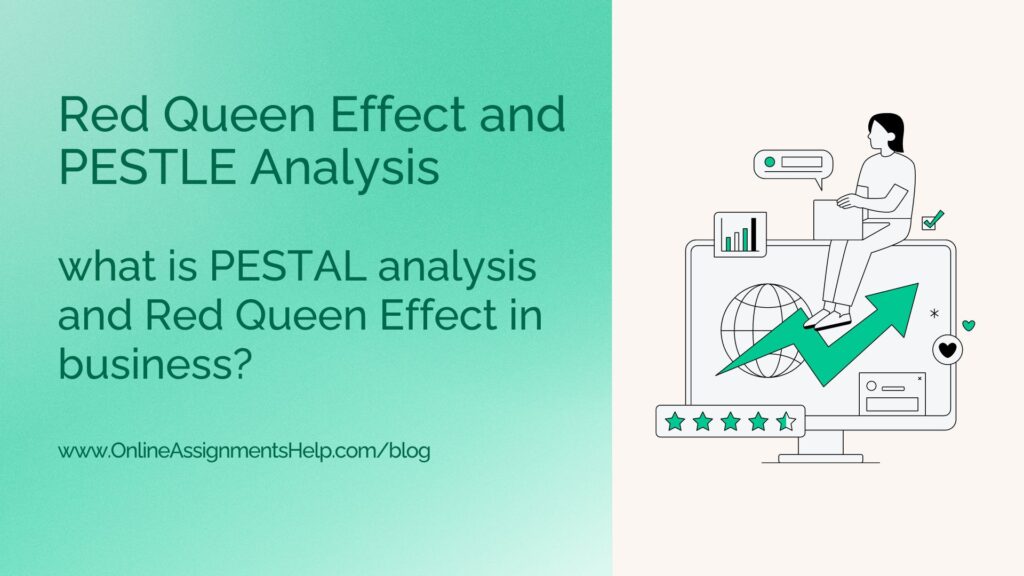Exploring the Red Queen Effect and PESTLE Analysis in Business
In the dynamic world of business, staying ahead of the curve is a crucial task. Two analytical frameworks that can help businesses navigate this complex terrain are the Red Queen Effect and PESTLE Analysis. Though seemingly unrelated, these concepts offer powerful insights into why companies must continuously evolve to maintain their market position.

Red Queen Effect?- Definition
The Red Queen Effect is a metaphor borrowed from Lewis Carroll’s “Through the Looking-Glass,” where the Red Queen tells Alice, “It takes all the running you can do, to keep in the same place.” In business terms, it refers to the phenomenon where companies must continually innovate and adapt, not merely to gain an advantage but to maintain their current standing. This is prevalent in sectors where technological advancements occur at a breakneck pace, such as IT, biotech, and consumer electronics. Companies like Apple and Samsung are prime examples of the Red Queen Effect in action, continually releasing new products to maintain market share.
Significance of the Red Queen Effect
- Survival: In today’s competitive market, staying stagnant equates to moving backward. Companies that don’t evolve face obsolescence. Hence, survival has to be done by adopting strategic steps.
- Consumer Expectations: Customers today are more informed and demanding. Meeting their expectations requires constant upgrades and new offerings.
- Technological Advancements: Fast-paced tech developments mean that what was revolutionary yesterday could be outdated tomorrow, forcing businesses to perpetually innovate.
PESTLE Analysis- Definition
PESTLE stands for Political, Economic, Social, Technological, Legal, and Environmental factors that affect a business or a market. It’s an analytical tool that helps companies gauge external macro-environmental factors that could impact their operations.
- Political: Government stability, trade policies, and regulatory guidelines.
- Economic: Economic growth rates, inflation, and exchange rates.
- Social: Cultural norms, demographics, and societal attitudes.
- Technological: Technological advancements that may offer both opportunities and threats.
- Legal: Regulatory compliance, employment laws, and patents.
- Environmental: Sustainability concerns, climate change impacts, and ecological regulations.
How PESTLE Complements the Red Queen Effect
A PESTLE Analysis is instrumental in identifying the external factors that force a company to ‘keep running.’ For instance:
- Political and Legal shifts could make existing business models obsolete, pushing companies to adapt.
- Technological advancements could make current products redundant, thereby encouraging innovation.
- Economic changes could force a business to alter its pricing strategy to stay competitive.
In summary, PESTLE Analysis can highlight the exact areas where the Red Queen Effect is likely to hit the hardest, thereby helping businesses to anticipate challenges and adapt proactively.
The Red Queen Effect and PESTLE Analysis, when used in tandem, offer a comprehensive overview of the competitive landscape and external factors affecting a business. The Red Queen Effect helps companies understand the necessity of perpetual innovation for survival, while PESTLE outlines the changing external conditions that necessitate this continual evolution. For modern businesses seeking not just to succeed but to thrive, understanding and applying these concepts is invaluable.



